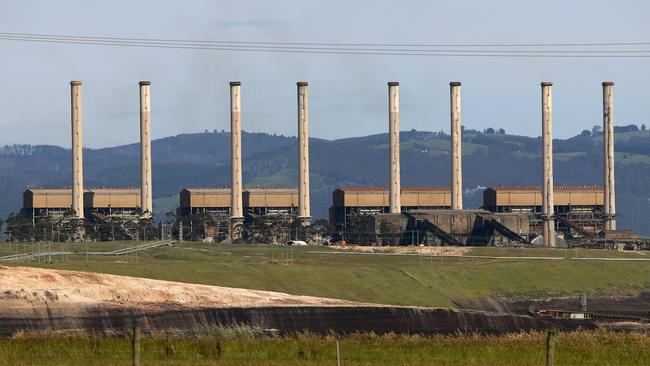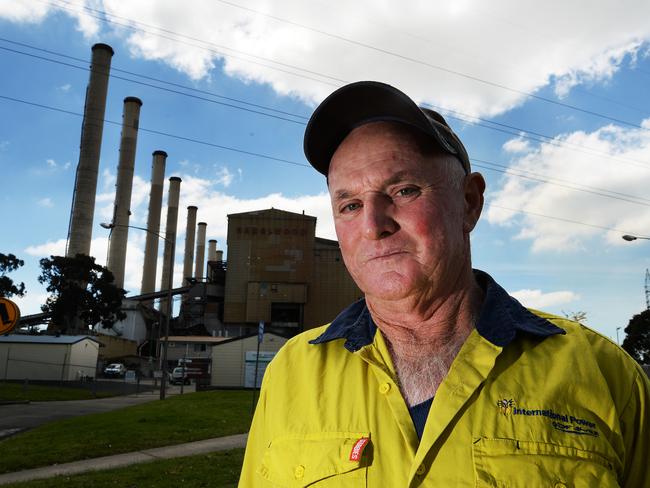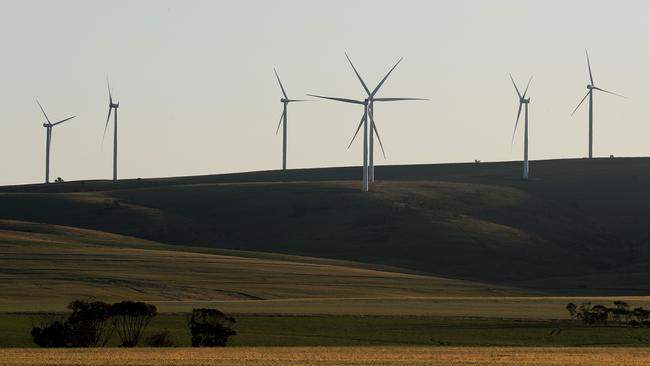Closure of Hazelwood power plant will have a ‘major impact’
AUSSIES are facing higher electricity bills and a “major impact” on power supply after the closure of Australia’s dirtiest power plant was announced.

AUSTRALIANS are facing higher electricity bills and a “major impact” on power supply after the closure of the country’s dirtiest power plant was announced yesterday.
French company Engie announced on Thursday it was “no longer economic to operate” the Hazelwood brown coal-fired power plant, which will close by March 31.
The station provides more than 20 per cent of Victoria’s power but also contributes 4 per cent of the electricity in the national grid.
Its closure has implications for Australians outside Victoria and some say it’s also a wake-up call for the federal government and its need to plan for future disruptions.
OUR POWER BILLS WILL GO UP
Federal Energy Minister Josh Frydenberg told Lateline that Hazelwood’s closure means Victoria will have to import electricity from NSW and Tasmania.
“I think there will be a price impact in neighbouring states as well because there won’t be that cheaper form of generation, particularly brown coal, which is what Hazelwood does produce, going into those other states,” Mr Frydenberg said.
“And the minute you start supplying either black coal or gas or renewables, costs do go up.”
Mr Frydenberg said while the Victorian Government had predicted a rise of up to 8 per cent in power prices, “the impacts might be slightly less in other states”.
Victorian Premier Daniel Andrews has said power bills for Victorians should go up by 4 per cent, which is about 85c a week, or $44.20 a year.
ABC has also obtained a separate government analysis based on assumptions by the Department of Environment, Land, Water and Planning, that predicted the average household bill would remain unchanged in 2017, then rise by about 8 per cent in 2018, or $86 a year.
Meanwhile, Frontier Economics forecasted retail electricity prices for Victorian householders would increase by up to 25 per cent immediately after a Hazelwood shut down, but that was under a scenario where other generators paid a levy for the plant to shut down.
Report author Danny Price told news.com.au that the impact of Hazelwood shutting down of its own accord, without the additional levy for a buyout, would be 20 per cent.
But Mr Price said it was unlikely retailers would hike prices that high.
“I don’t think they are going to rack up a 20 per cent increase and then drop it again, that’s not how they behave,” he said.
He said the longer term impact over the next five years would likely be a 10 per cent increase.
In South Australia and NSW, Mr Price said the price increase would likely be between 4-5 per cent as there had been changes since the modelling was done, including the shut down of the Northern Power Station in SA.
Regardless of who is right, it seems Victorians will be paying more for their electricity, and residents in neighbouring states will be as well.
CONSEQUENCES FOR NATIONAL POWER GRID
Mr Frydenberg has also warned of the impact to electricity supply across Australia.
“The closure of Hazelwood will have a major impact on supply, not just in Victoria but also across the national electricity market because Hazelwood made up about 4 per cent of supply across the national electricity market, helping to supply power into South Australia, into Tasmania, and also into New South Wales,” he said.

Australians witnessed first hand how reliant some states can be on their neighbours for electricity supply, when conditions during a severe storm in South Australia (which gets 40 per cent of its power from renewables) forced it to get more power from Victoria, which sparked a statewide blackout when the interconnector overloaded.
RELATED: What’s going on with South Australia’s power supply?
Mr Frydenberg said the closure of Hazelwood means Victoria would go from being a net energy exporter to becoming a net energy importer, and at times of peak demand.
“For example in the January/February period in 2018 after the closure — in the hot summer months where there will be increased peak demand — very close attention will need to be taken to ensure that there is the stability and security of supply,” he said.
“This could include additional measures, not just market-based measures, but additional measures from AEMO (Australian Energy Market Operator) in order to elicit sufficient generation.”

This morning Mr Frydenberg warned against more shut downs of coal fired power plants in the short term. He blamed the Victorian government for “driving out of town” Hazelwood’s owner by tripling coal royalties paid to the state.
“We can’t afford the closure of another Hazelwood in the near term,” he told ABC Radio on Friday, adding that power supply was already tight.
Dr Roger Dargaville, deputy director of the Melbourne Energy Institute, is taking a more optimistic approach to Hazelwood’s closure, telling 7.30 he thought it would have little impact on Australia’s energy security or on price.
“I think from an energy system point of view, the closure of Hazelwood isn’t going to be a big deal in New South Wales as a number of black coal generators that are running at fairly low capacity factors that can produce more output if required,” he said.
“They’re more expensive to run using New South Wales black coal so the costs will go up.
It certainly won’t stay the same but we expect that cost to be quite minimal.”
MORE CLOSURES LIKELY
With the Paris climate change agreement coming into force today, it seems Hazelwood’s closure could be a sign of the times.
Engie has already flagged it will look to sell the brown coal-fired Loy Yang B power station in the Latrobe Valley and the gas-fired Kwinana plant in Western Australia.
The Hazelwood closure also comes after the shuttering of several other coal-fired power stations across the country in recent years.
The Climate Institute CEO John Connor has criticised the federal government for not properly planning for the country’s transition to new zero emissions.
He pointed to the lack of a national plan setting out a pathway for Australia to met its future energy needs, saying this set up more shocks for communities like those in the Latrobe Valley.
“Without this our communities will face much more stress, our energy system will face continued shocks and investment in clean energy will face ongoing uncertainty,” Mr Connor said.
About 750 people will lose their jobs because of the Hazelwood closure, and there are fears the Latrobe Valley will become a series of ghost towns.
Some 63 per cent of electricity generation in Australia is from coal, government data for 2014-15 show.

Dr Dargaville agrees that Australia has a huge challenge ahead.
“To build a low-carbon electricity energy system is difficult unless you have a lot of hydro, which we don’t, no-one has ever gone to a very high penetration renewable energy system before,” he told 7.30.
WILL IT BRING DOWN EMISSIONS?
Hazelwood contributes about 3 per cent of Australia’s greenhouse gas emissions but Dylan McConnell of the Melbourne Energy Institute estimates its closure will probably only amount to a 1 per cent decrease in Australia’s annual emissions.
This is because Victoria will still need to get extra power from somewhere, and this will most likely come from black coal-fired power stations in NSW.
Brown coal is considered “dirtier” than black coal, with environmentalists welcoming Hazelwood’s closure.
“Hazelwood is the dirtiest power station in Australia and one of the dirtiest in the world,” Australian Conservation Foundation’s chief executive Kelly O’Shanassy said.
“This is a key moment in a transition that is already well under way — the switch from dirty energy to clean energy — and Australia’s energy policy is now at a fork in the road.”

— With AAP



